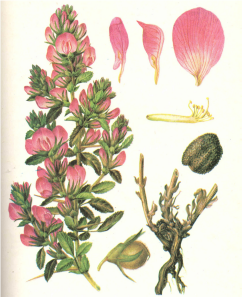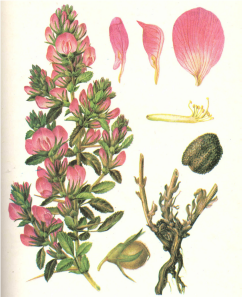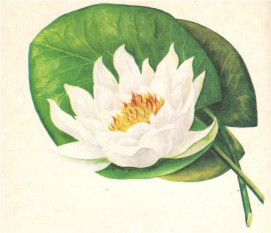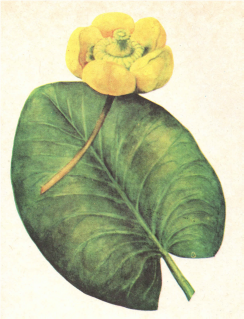СЕМЕЙСТВО ЯТРЫШНИКОВЫЕ — ORCHIDACEAE
Мелкие многолетние тра- йстые растения с клубнекорнями или корневищами. Листья простые, с панельным жилкованием. Цветки одиночные или в кистях. Цветки неправилььные, околоцветник венчиковидный, 6-листный. Три наружных листочка свободные, направленные вверх, средний из трех внутренних листочков резко отличается по величине, форме и часто по окраске, образуя «губу» («башмачок»); у некоторых родов губа продолжена в длинный полый выступ-шпорец; вследствие скручивания завязи губа обращена вниз. Одна тычинка (редко две) — сросшаяся со столбиком в колонку, две другие превращены в мелкие стаминодии. Пыльца из пыльника не рассыпается, а в каждом гнезде слипается в комок «поллиний». Завязь нижняя. Плод — коробочка с многочисленными очень мелкими семенами, с недоразвитым зародышем, поэтому размножение преимущественно вегетативное. Цветки могут опыляться только специально приспособленными насекомыми, и губа служит «взлетной площадкой». Медицинское значение имеют мелкие лесные орхидеи родов: Orchis, Platanthera, Gymnadenia, Anacamptis.
Клубнекорни указанных родов богаты крахмалом и слизью, в слизистых клетках — пучки рафид. В листьях иногда бывают производные кумарина. В цветках — душистые гликозиды. У рода Cypripedium обнаружено едкое вещество. Не найдено алкалоидов и дубильных веществ.
Мелкие растения с мочковатыми корнями, один из которых переполняется питательными веществами и образует сочный запасающий клубне- корень. Весной и летом питательные вещества расходуются на развитие надземной части и клубнекорень истощается и отмирает. Но еще с весны в пазухе основания листа образуется новый дочерний запасающий клубень, он перезимовывает и служит для развития растения в следующем году. Форма клубнекорня овальная или пальчатораздельная. Листья простые, прикорневые или стеблевые. Стебель несет верхушечное соцветие-кисть. Цветки сиреневые, с трехлопастной губой и длинным шпорцем. Все виды ятрышника могут быть использованы для сбора клубней.

В Фармакопию VIII включены виды: Orchis latifolia L, Orchis maculata L, Orchis mascula L, Orchis militaris L, Orchis morio L.
Произрастают виды ятрышника в сыроватых местах лесных полян и опушек и встречаются во всей лесной зоне Европейской части, Сибири, Дальнего Востока и на Кавказе. Такие же клубнекорни имеют некоторые другие роды, которые тоже заготавливаются.









